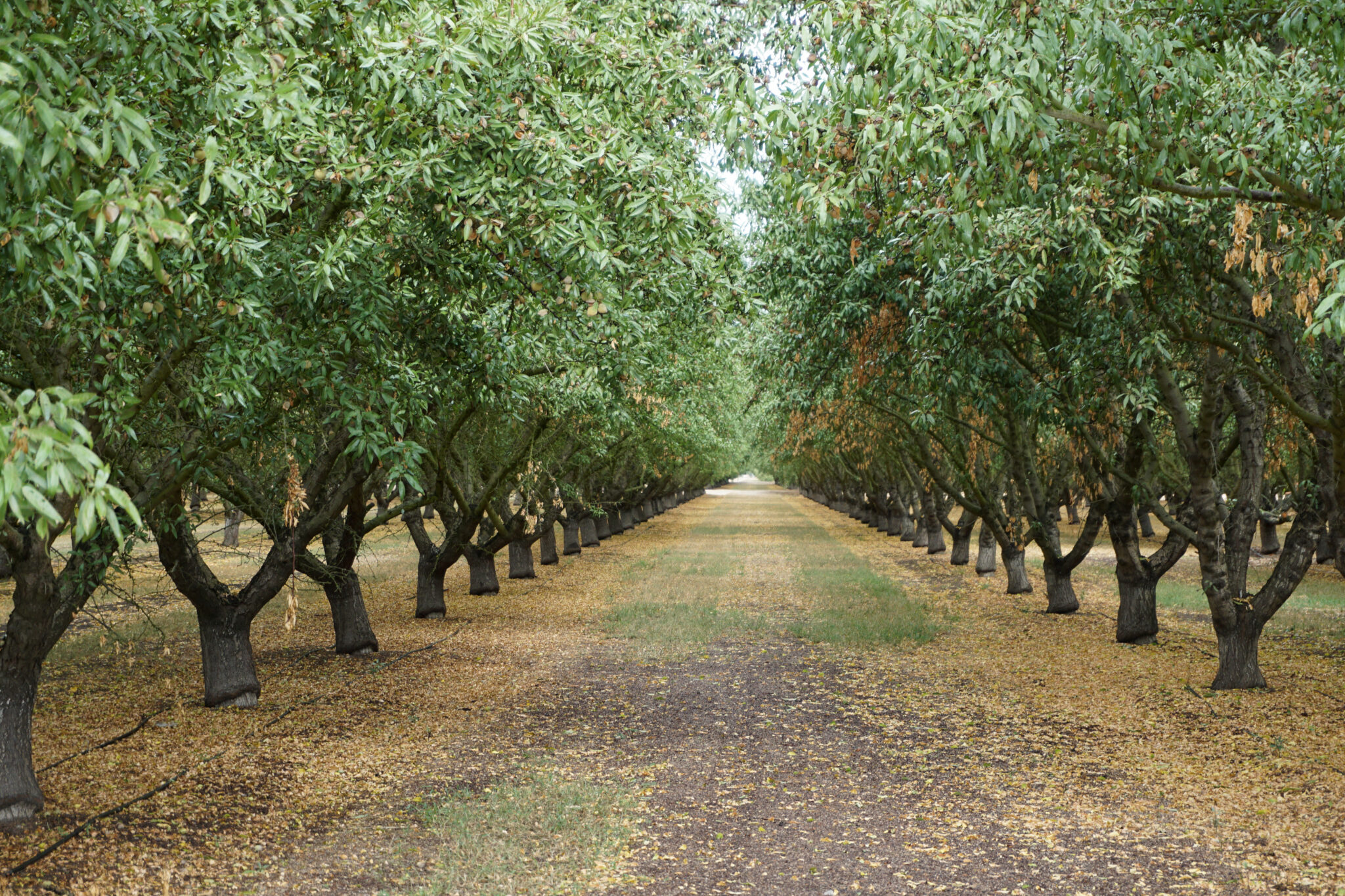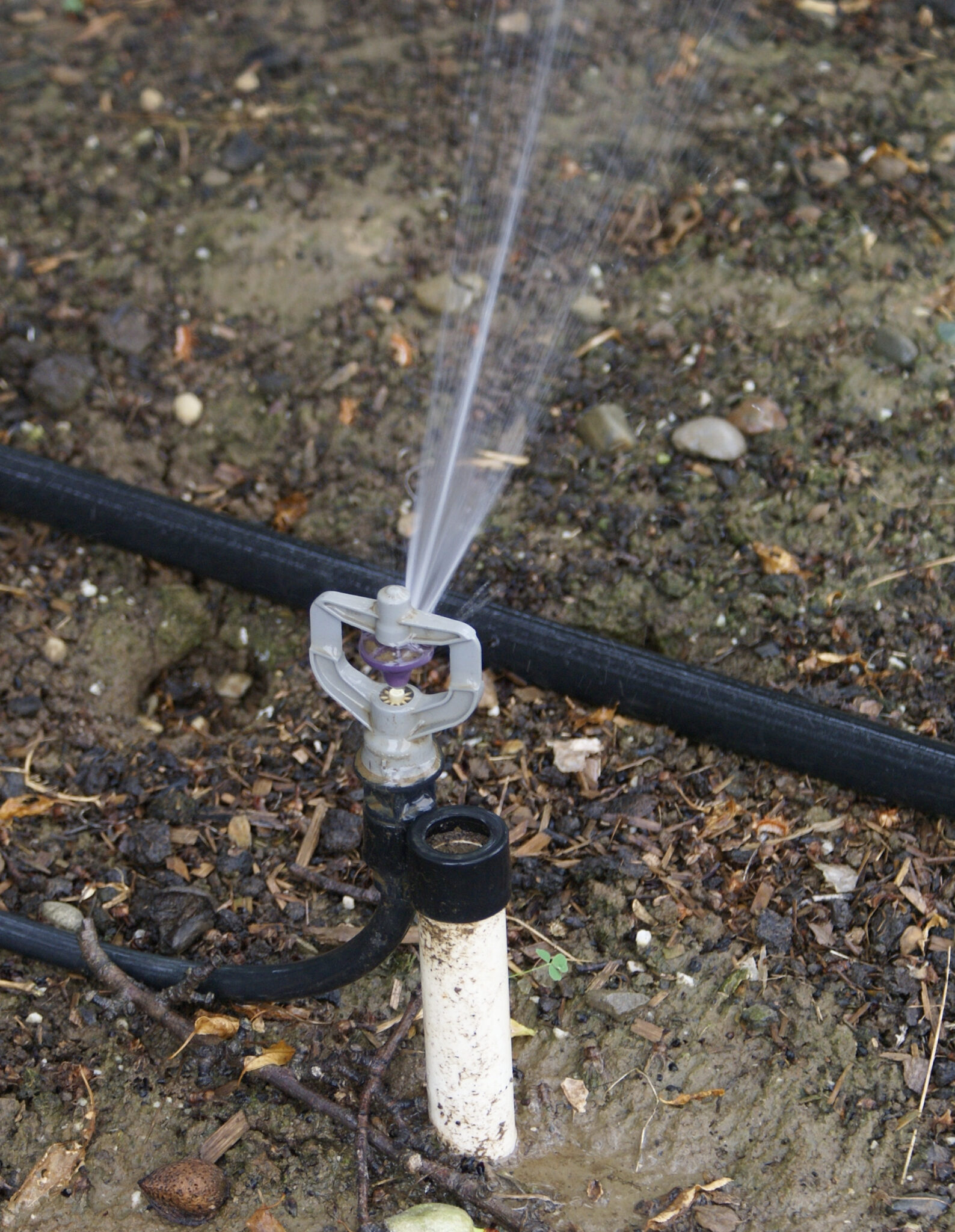
Distribution uniformity (DU) has long been viewed as a top priority for orchard managers. However, many successful growers are turning to a next-generation measurement thought to be more effective in improving yield: transpiration uniformity (TU). This article explains the differences between the two metrics and argues that TU should become the preferred metric for most growers.
What’s the Difference?
Distribution uniformity is a measure of the irrigation system. Transpiration uniformity is a measure of the plant itself, and as such, is more closely related to the holy grail of tree uniformity.
Specifically, DU describes how uniformly water is being applied across the orchard—in other words, whether certain parts of the orchard are receiving more water than others. TU, on the other hand, measures how uniformly the crop is transpiring, or releasing water vapor.
The major advantage of TU over DU is that TU is a direct measurement of the plant and is more closely related to yield than an indirect measurement like DU. Additionally, it is far easier to obtain highly accurate TU measurements than DU measurements at scale, making it a more practical metric for busy growers.

Shortcomings of Distribution Uniformity
There are four common problems with relying on DU as an indicator of orchard uniformity. To begin with, there are the inherent weaknesses of spot sampling. Secondly, the process of obtaining DU measurements is labor- and time-intensive—which leads to a third problem: infrequent readings. Most importantly, though, DU may be the wrong metric for achieving the management goals for which it is used.
DU is measured through a limited number of samples—often just four samples per thousand trees. This means that information about water application across the vast majority of the orchard is missing. Combine this with human error in taking those limited samples, and the result is a measurement likely to misrepresent the actual spatial variability in a typical block.
While most growers agree that it’s important to measure DU, many report doing so less often than they would prefer, often citing limited time and resources. In fact, it’s not unusual for growers to measure DU only every few years—and a lot can change in that amount of time. Infrequent measurement means that irrigation issues that emerge over the course of time, such as plugs and leaks, aren’t accounted for.
For all the difficulty of obtaining accurate DU measurement, 100% uniform distribution of water is unlikely to translate to a 100% uniform orchard. The target for applied water decisions isn’t uniform distribution; rather, it’s uniform growth and yield. And as all growers know, there are numerous variables that can lead to drastically different water uptake in trees, even if water is uniformly flowing from an irrigation set.
An internal study conducted by Ceres Imaging found that issues unrelated to irrigation equipment—such as topography, soil salinity and soil texture—account for 20% to 40% of the variation in tree water status.
Using DU to inform applied water decisions is like determining how long it takes to run a marathon by considering only the distance. It may seem straightforward, but it doesn’t account for the elevation gain of the course, the weather conditions on race day or the fitness of the runner.
The Transpiration Uniformity Alternative
If using DU to make decisions about applied water needs is similar to estimating the duration of a run by considering only the distance of the route, then using TU is akin to simply reading the stopwatch. This is because TU is a measurement that reflects the water uptake of the crop itself, not the water flowing from the irrigation system.
To generate accurate TU measurements, Ceres Imaging captures high-resolution thermal imagery from fixed-wing airplanes, then processes the data using proprietary crop models. TU measurements are reported at intervals throughout the season with no sampling or additional time and labor required from the grower.
In a Ceres Imaging study analyzing 237 drip-irrigated tree nut farms covering more than 300,000 acres, the average TU was 92%. TU scores higher than 95% indicate high farming efficiency, while scores of 85% or lower are fairly common and suggest the grower may be able to find opportunities to improve. Similar to DU measurements, a low TU usually indicates under-application of water in certain parts of the field and over-application of water in others.
When and How to Use Transpiration Uniformity
Much like DU measurements, TU measurements can be used to guide applied water decisions, informing water amount and run-time calculations as well as fertigation decisions.
Growers can also use TU as a key performance metric to track the efficiency of their operation over time. High TU across the orchard is important because it simplifies management decisions and improves outcomes at key events in the season. Growers with high TU consistently save on water and energy expenses as well as achieve improved nut removal rates at harvest.
While this article has introduced the benefits of TU over DU, it is still recommended to get a DU test every few years to evaluate the performance of the irrigation system. Likewise, there are instances where non-water related issues—such as certain diseases or unusually heavy dust—can affect tree transpiration rates. In these cases, and in other situations where the grower is trying to identify a root cause, it is good to use TU and DU in tandem.
Nonetheless, since the ultimate goal is uniform trees and high yield, growers should consider replacing or complementing DU with TU as a metric for many of their ongoing management decisions.











